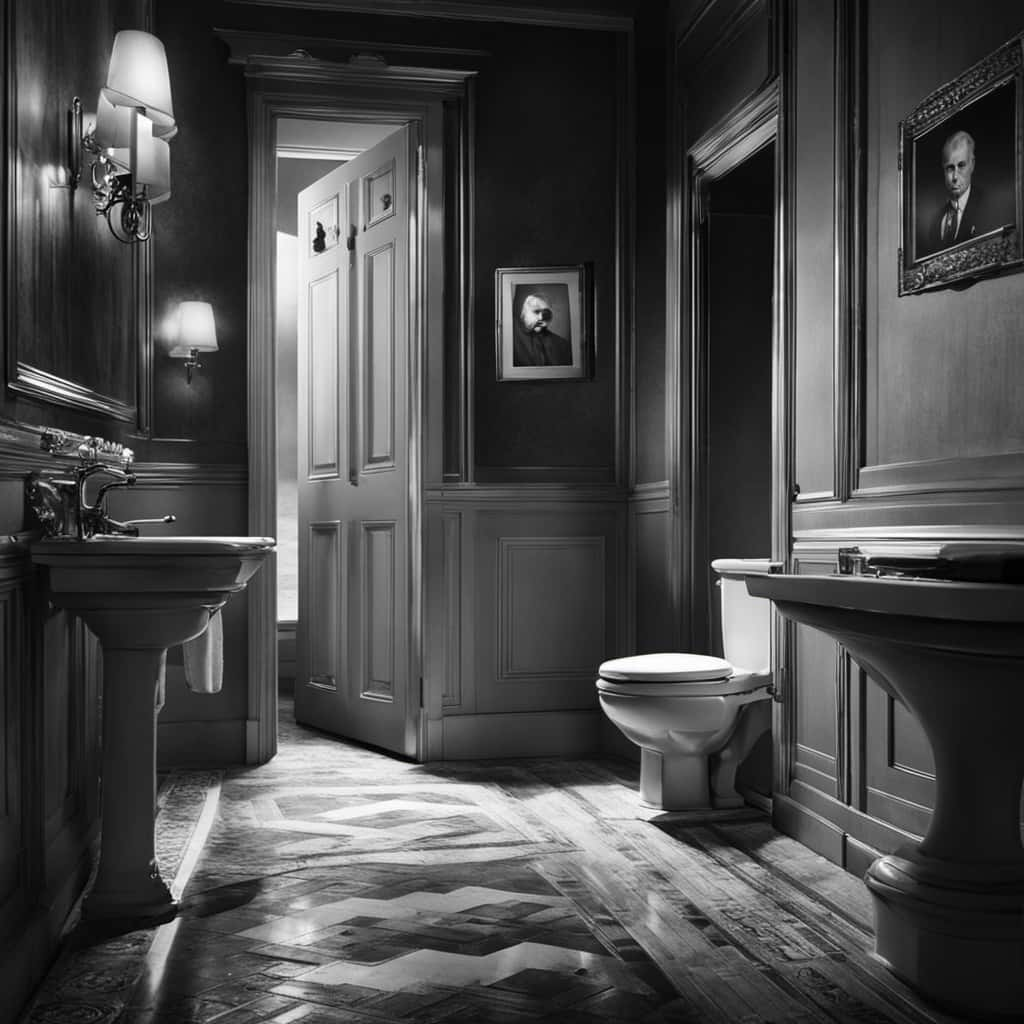Have you ever found yourself faced with a stubborn toilet blockage, desperately searching for a solution? Well, look no further.
In this article, I will share my tried and tested method for clearing toilet blockages. With just a few simple tools and a little bit of know-how, you’ll be able to tackle this pesky problem head-on.
So, let’s get started and say goodbye to toilet blockages once and for all.
Key Takeaways
- Flushing large amounts of toilet paper can lead to a buildup of paper in the pipes.
- DIY solutions such as using a plunger, plumbing snake, or DIY techniques like hot water or baking soda and vinegar can effectively clear toilet blockages.
- Harsh chemicals should be avoided as they can damage the pipes.
- If DIY methods fail or the blockage persists, it is recommended to consult a professional plumber.
Common Causes of Toilet Blockage
One of the most common causes of toilet blockage is the flushing of large amounts of toilet paper. This can lead to a buildup of paper in the pipes, causing them to become clogged.
Toilet blockage symptoms include water rising to the brim of the bowl when flushed, slow drainage, or complete blockage.
As an experienced plumber, I have encountered many cases of toilet blockage caused by excessive toilet paper usage. However, there are DIY solutions for toilet blockage that can help you avoid calling a professional.
One effective method is using a plunger to create suction and dislodge the blockage. Another option is using a plumbing snake to physically remove the obstruction.
It is important to remember to be cautious and avoid using harsh chemicals, as they can damage the pipes.
Tools and Materials Needed
You’ll need a plunger, gloves, and a bucket to tackle the toilet blockage.
If you don’t have a plunger handy, there are a few alternatives you can try.
One option is to use a wire coat hanger, straightened out, and bent into a hook shape.
Another alternative is to make a DIY plunger by using a plastic bottle with the bottom cut off. Simply place the bottle over the drain and squeeze it to create suction.
Additionally, there are various DIY toilet unclogging techniques you can employ, such as pouring hot water into the bowl or using a mixture of baking soda and vinegar. These methods can often do the trick without the need for a plunger.
Now that you’re equipped with some plunger alternatives and DIY techniques, let’s move on to the step-by-step guide to clearing toilet blockage.
Step-by-Step Guide to Clearing Toilet Blockage
Alright, now that you have all the necessary tools and materials, let’s get into the step-by-step guide for unclogging your toilet.
To start, please refer to the table below for a clear overview of the unclogging techniques and DIY solutions we will be discussing.
| Step | Unclogging Technique | DIY Solution |
|---|---|---|
| 1 | Plunger | Baking Soda + Vinegar |
| 2 | Toilet Auger | Hot Water + Dish Soap |
| 3 | Enzyme Drain Cleaner | Wire Hanger |
| 4 | Hydrogen Peroxide | Plumbing Snake |
Now, let’s dive into each step in detail. First, we’ll use a plunger. Place it over the drain hole, ensuring a tight seal, and push and pull vigorously to create suction. If that doesn’t work, move on to step two: using a toilet auger. Insert the auger into the bowl, rotating it clockwise until you encounter resistance, then push and pull to break up the clog. If the clog persists, step three involves using an enzyme drain cleaner. Follow the instructions on the product label. Finally, step four is to use hydrogen peroxide or a plumbing snake to physically remove the clog. Remember to exercise caution when using chemicals or tools. With these unclogging techniques and DIY solutions, you’ll be able to tackle any toilet blockage with confidence.
Preventive Measures to Avoid Toilet Blockage
To prevent future issues, it’s important to take some preventive measures in order to avoid clogging your toilet. Regular toilet maintenance is key to keeping your toilet functioning properly. Here are a few tips to help you maintain a blockage-free toilet.
First, make sure to only flush toilet paper and waste down the toilet. Avoid flushing items like baby wipes, sanitary products, or excessive amounts of toilet paper, as these can easily cause blockages.
Second, consider installing a toilet paper holder with a built-in shelf, as this can prevent excess toilet paper from falling into the toilet bowl.
Lastly, if you do experience a minor blockage, there are DIY solutions you can try, such as using a plunger or a toilet auger. By following these preventive measures and DIY solutions, you can keep your toilet free from blockages and ensure it continues to function properly.
However, in some cases, it may be necessary to seek professional help if the blockage persists or if you’re unsure about how to handle the situation.
When to Seek Professional Help
If a minor blockage persists or you’re unsure about how to handle the situation, it may be necessary to seek professional help.
Signs of a severe toilet blockage include water rising to the rim, gurgling sounds, and slow drainage. These signs indicate a more serious issue that may require specialized equipment to clear.
While professional help is often the most effective solution, there are also cost-effective alternatives to consider. One option is using a plunger to try and dislodge the blockage yourself. Another option is using a drain snake or auger to manually remove the obstruction. Additionally, you can try using a mixture of hot water and dish soap to break down the blockage.
However, if these methods fail or if the blockage persists, it is best to consult a professional plumber to avoid further damage to your plumbing system.
Conclusion
In conclusion, clearing a toilet blockage is a task that requires patience, skill, and the right tools. By following the step-by-step guide provided, you can tackle this common household issue with confidence.
However, it’s important to remember that prevention is key. By being mindful of what goes down the toilet and implementing preventive measures, you can avoid future blockages.
But, if all else fails and the blockage persists, don’t hesitate to seek professional help. Remember, a clear and functional toilet is essential for a hassle-free daily routine.










